The Best Ink for Vintage Fountain Pens (Avoid These)
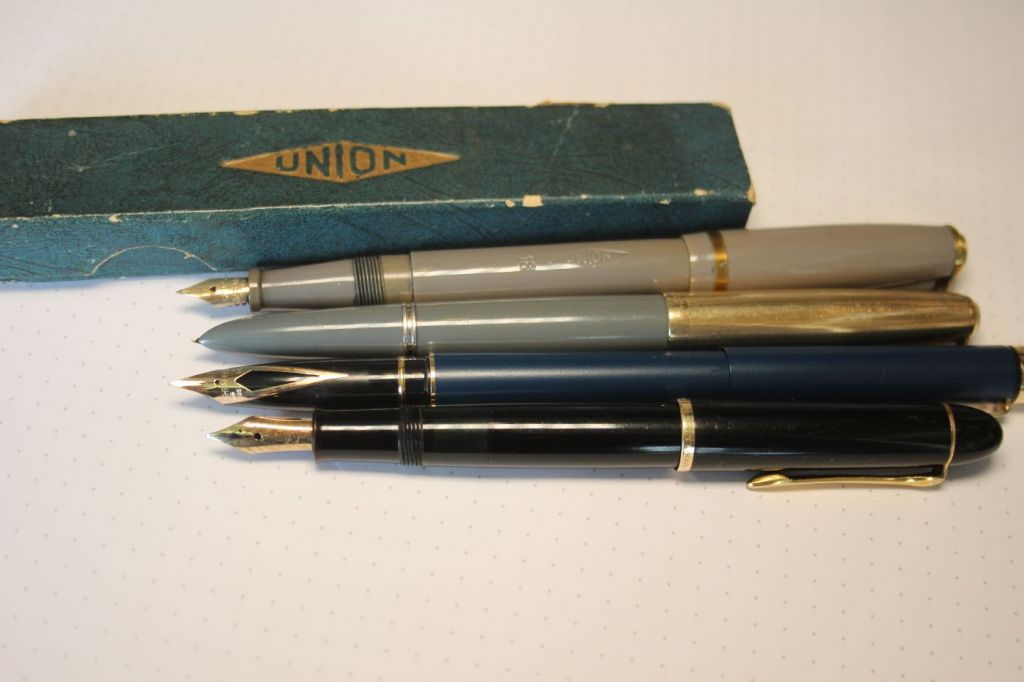
Not all inks are suitable for vintage fountain pens. Vintage pens use different materials from today, and can react with certain inks. What inks should you use, and which should you avoid?
What's the best ink for vintage fountain pens? The safest inks to use in vintage fountain pens are Waterman Blue, Diamine's blue inks, Pelikan 4001 Black and Blue, Parker Quink Black and Blue, Sheaffer Skripp Black, and Aurora. These inks are widely recognized for being safe to use. You want to avoid Japanese and Indian inks.
But with so many inks out there, how do you know which ones to use and to avoid? Also, there is one vintage pen that's the exception to this rule. Read on to learn more.
In this article:
Good Inks for Vintage Fountain Pens
We've already quickly gone over some basic inks you can use, but understanding why we want to use certain inks and avoid others will help you make your own decisions. So what should you look for in ink for use in your vintage fountain pen?
Most basic ink colors by respectable brands, such as Waterman, Parker, Sheaffer, and so on, will generally be safe and easy to clean. They were already around when your vintage pen was first made, so their inks will work most of the time.
Great inks to use in vintage pens:
- Waterman Blue
- Pelikan 4001 Blue
- Diamine
- Aurora
- Parker Quink
- Sheaffer Skripp
I recommend only using Waterman, Diamine, Parker Quink, Pelikan 4001, or Sheaffer Skrip basic colors in most vintage pens.
These inks are tried and recognized by the entire fountain pen community for safe use in any fountain pen.
I want to add J. Herbin to this list since it is pH neutral. However, I've read somewhere it isn't (someone did a test at home). Another longtime fountain pen user also said they never use Herbin in vintage pens, since they tend to clog up the feed.
For an in-depth discussion about the safety of different inks, please check out my article on the safest fountain pen inks here.
Use colors with low pigment
You want to use low pigment and non-sheening inks. The thinner the ink, and the less pigment it contains, the easier it is to clean.
Blue inks typically contain the least amount of pigment. Blue is the single color that requires the least amount of pigment, which is why it is the most common fountain pen ink.
However, there are some blues you should probably avoid when going vintage. Noodler's Baystate Blue could be trouble.
So not all blues and blacks have low pigment. Noodler Inks are highly saturated, and so is, for example, Diamine Majestic Blue. Low saturated inks (wetter) will tend to do better over time in old pens.
In the same way, modern sheening inks contain a lot of pigment (and glitter), which might clog up your feed, so I recommend staying away from anything shiny.
Red inks also need a lot of pigment to be satisfying, so I recommend staying away from red inks unless you're willing to stick to red in that specific pen from now on. It might stain the pen and contaminate any new ink colors you put in it.
Use pH neutral inks
The next factor is the inks pH value. Ideally, you want to use pH neutral inks as much as possible. Acidic isn't great, and alkaline is even worse.
Examples of alkaline inks are Pilot's Namiki Iroshizuku line. These inks are very alkaline, with some inks having a pH-value of up to pH 10.
Base it on the materials and filling mechanism
The last factor is the material and filling mechanism of the pen. Some materials will hold up better, as will some filling mechanisms.
Pens with rubber sacs are known to be fragile. Also, they will soak up ink and contaminate other ink colors, so you want to stick to one color here.
Vacumatic and eyedropper filling systems can also be problematic. Since the ink is in direct contact with the pen, the celluloid body of the pen might react with any chemicals in modern inks. With these pens, you want to stay away from anything Japanese, especially.
There is one exception: the Parker 51. This pen can stand any ink since it was designed to use superchrome inks.
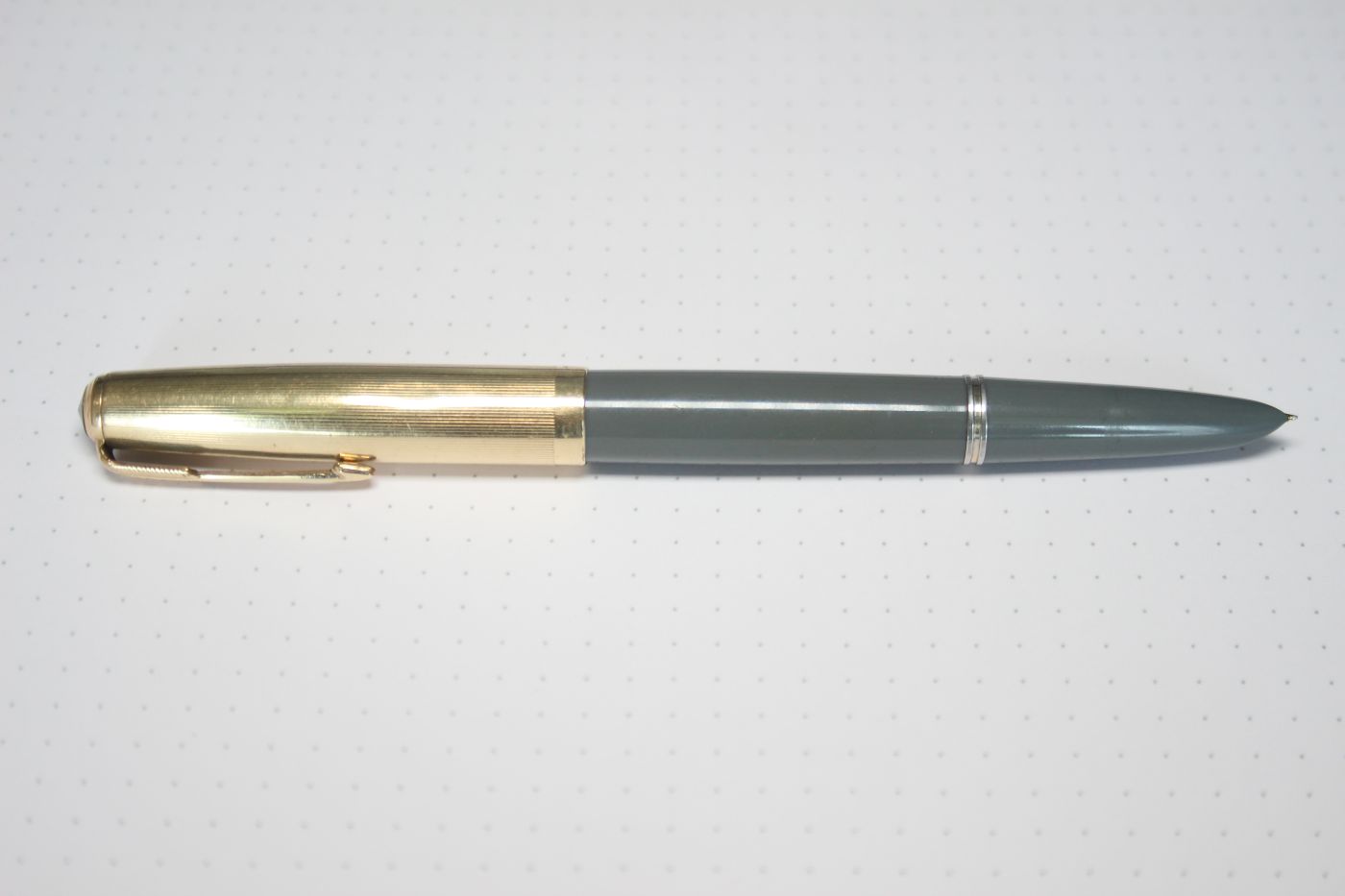
Inks made by the same manufacturer around the same time are nearly always a good fit. However, not all retro inks are less aggressive. In fact, most old inks contain way more alcohol (superchrome ink) or cleaning and antibacterial solution.
You should also never let your ink dry inside the pen if you want to make sure your vintage pens keep writing. This is called pen hygiene. It's easy to flush out your pen; read more here.
Inks You Should Avoid
- Noodler's Baystate Blue
- Noodler's Private Reserve inks
- Japanese inks, like Pilot Namiki Iroshizuku
- India ink (avoid in all fountain pens)
- Red inks
Noodlers inks are said to clog up feeds and stain the pen. There is an ongoing discussion about these inks, and it is unclear whether they are always problematic or not. But they are problematic sometimes. If you don't want to take chances, avoid Noodler's private reserve.
Japanese inks have a different chemical makeup, making them alkaline, which is bad for old pen bodies.
India ink should never be inside a fountain pen, ever. It contains way too much pigment and will almost always cause trouble by clogging up your feed.
Red inks need more pigment than any other color and might clog up your feed. If you use regular red inks by the major brands and make sure you clean your pen regularly, you probably won't experience any problems.
Why You Can't Use Any Ink in Vintage Fountain Pens
Vintage fountain pens were made from different materials than contemporary pens. A lot of fountain pens back then were made from celluloid, which is known to react chemically with some ink ingredients.
This might cause staining of the pen body or even weird chemical reactions.
When your ink reacts with the inside of the pen, it might clog up your feed permanently. Once your feed is clogged, it's hard to clean with some filling mechanisms. Especially the Vacumatic is known for being hard to clean.
Another potential problem is that some inks might stain vintage pen bodies. This will reduce the value of the pen, but it will also tie you permanently to that color (unless you don't care).
My Favorite Vintage-Friendly Inks
So use the most boring, saddest inks, without any saturation, sheen, or water-resistant properties, right?
That sounds bad. No, just use those basic inks if you're afraid to mess up your vintage pen. Luckily, there are plenty of brands out there that provide solid and reliable inks in great colors too.
Below you'll find my personal favorite inks for older pens as a reference point.
Most beautiful inks for vintage pens
- Diamine Majestic Blue
- J. Herbin Blue Pervenche
- Pelikan Edelstein Aventurine
- Diamine Emerald
- Diamine Sherwood Green
- Diamine Teal
- J. Herbin Poussière de Lune
- Diamine Chocolate Brown
I like everything by Diamine and J. Herbin. I haven't had any trouble with J. Herbin, and their colors are amazing. They only use natural ingredients and are said to be pH neutral, so I use them. But as I've said before, some people disagree.
Diamine offers very beautiful colors that are all easy to clean and behave very well. Their colors tend to be a bit more saturated, but since they are also a bit wetter, they never cause trouble for me.
Even Majestic Blue is super easy to clean, unlike some other high-saturation blues by other brands. And it's a gorgeous rich blue with a red sheen to it.
Best everyday inks for vintage pens
- Pelikan 4001 Black
- Waterman Blue
- Parker Quink Black or Blue
- Sheaffer Skrip Black
If you're looking for inks you can use every day, and want some water-resistant properties too, take a look at Pelikan 4001 Blue-black or Black. It doesn't feather much on cheaper paper too.
Waterman Blue is also a great everyday ink, but it isn't water-resistant.
Diamine Sapphire, Majestic, and Prussian Blue are all gorgeous blues, but not very water-resistant. They also have a longer than usual dry time, making them a bit more impractical.
Parker Quinks and Sheaffer Skrip Black are a bit boring and not as saturated. In return, they are fast-drying, don't feather a lot, are super cheap, and are very easy to clean.
Did you find the answer to your specific question?
👍 81 👎 3
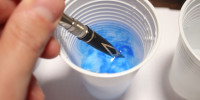
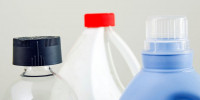
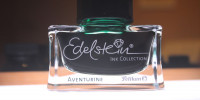
Comments
Mohamed Jaffar
Great to know you, Shawn Buckles! I would love to know more about your interest. I will write to you to share some of my thoughts.
Leave a comment